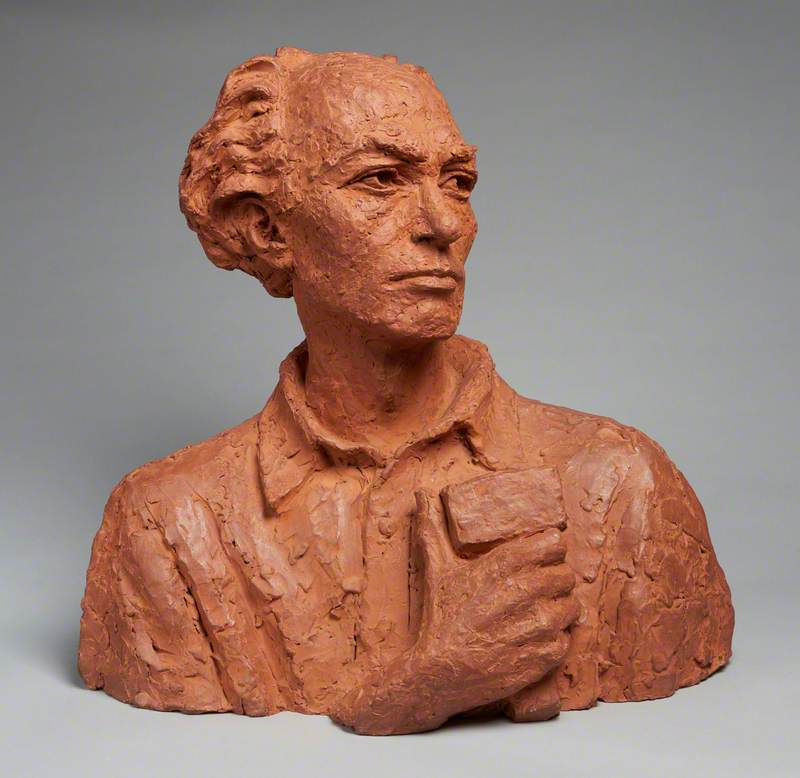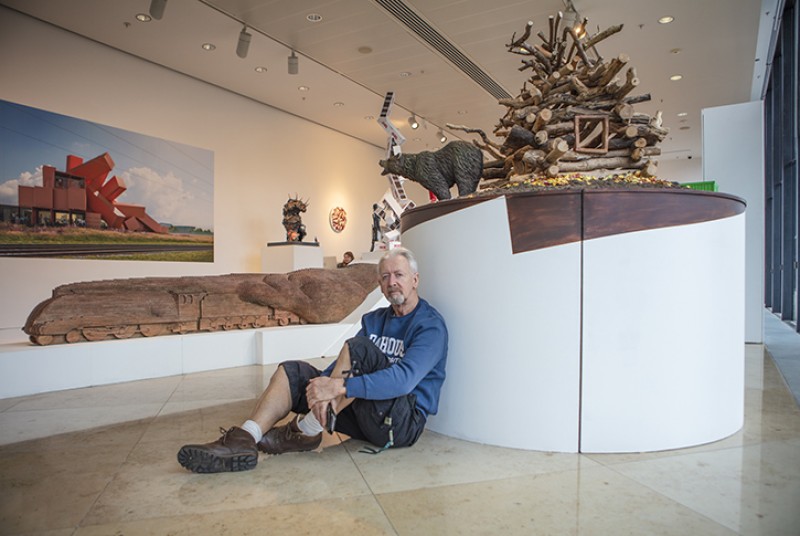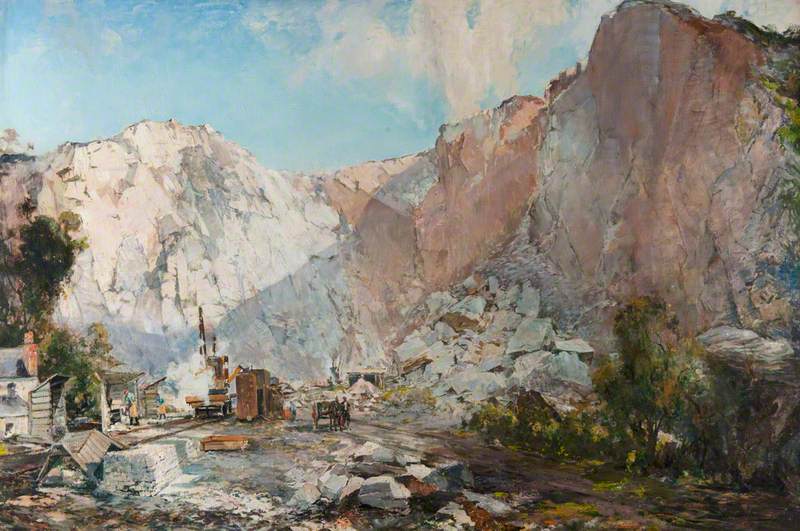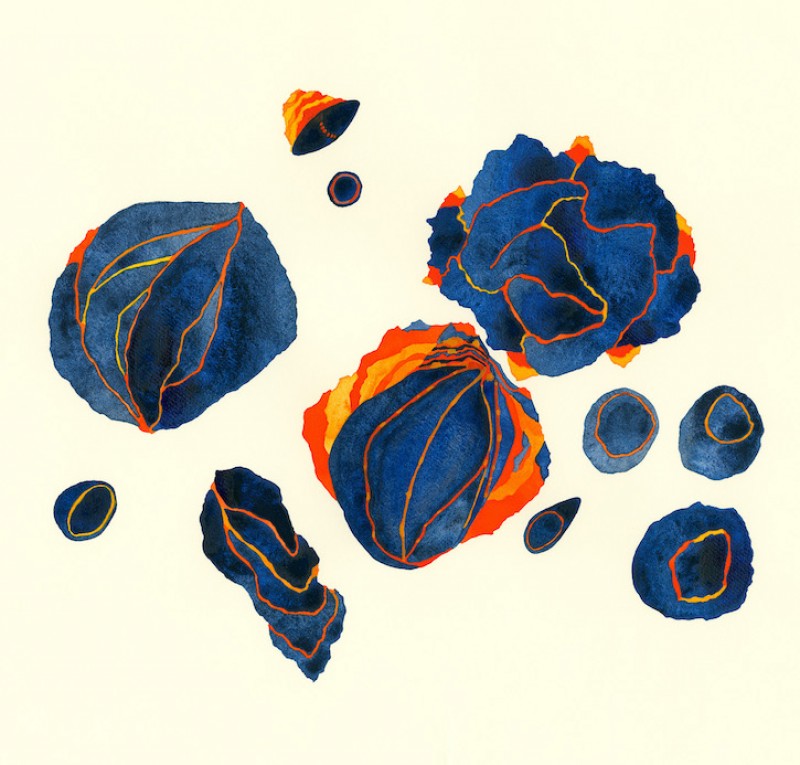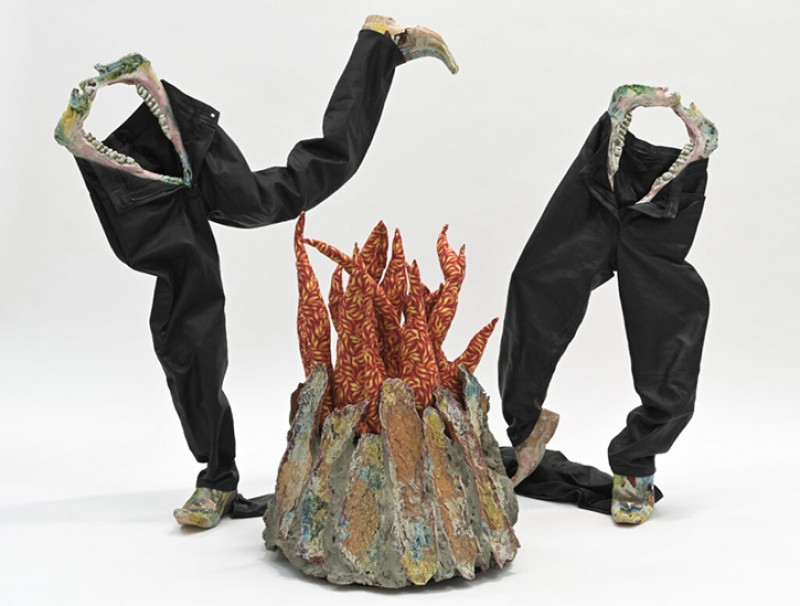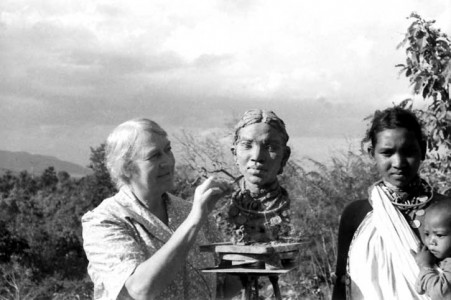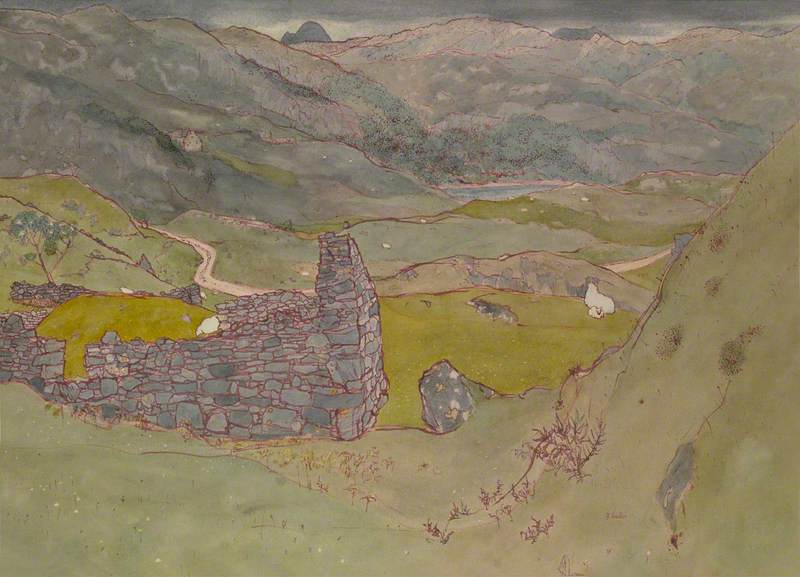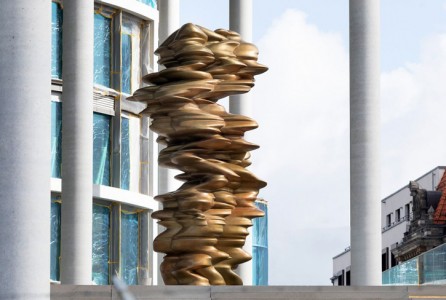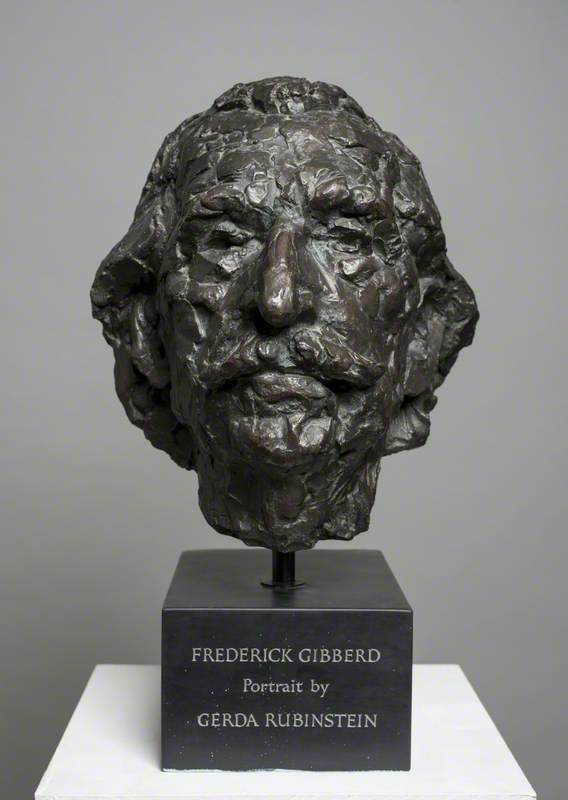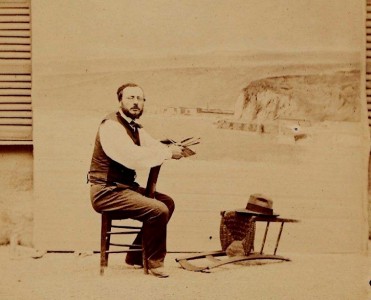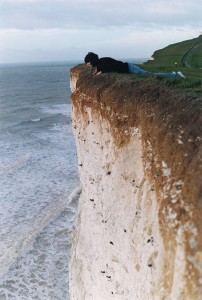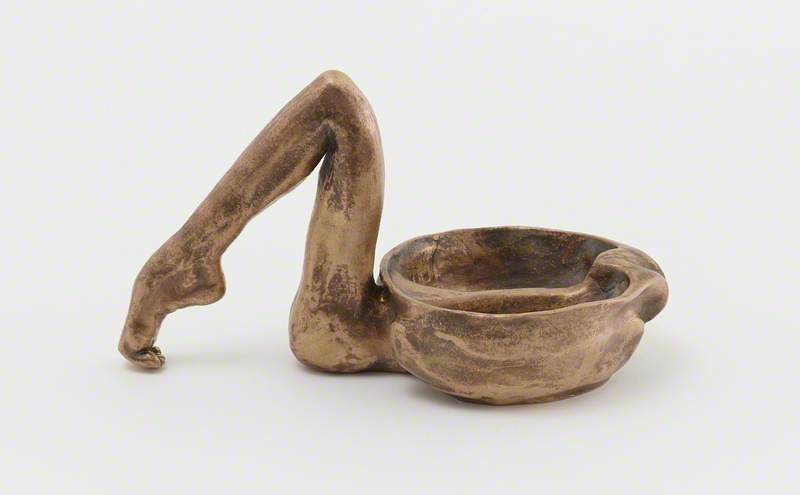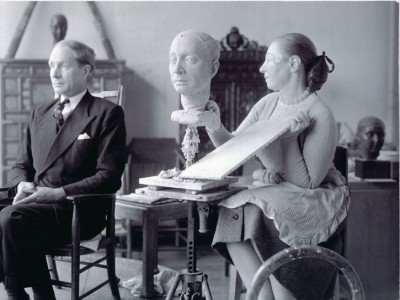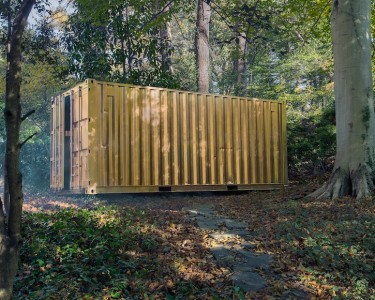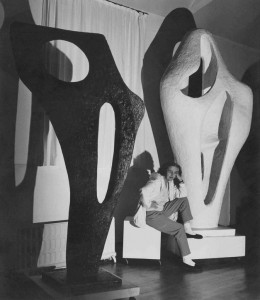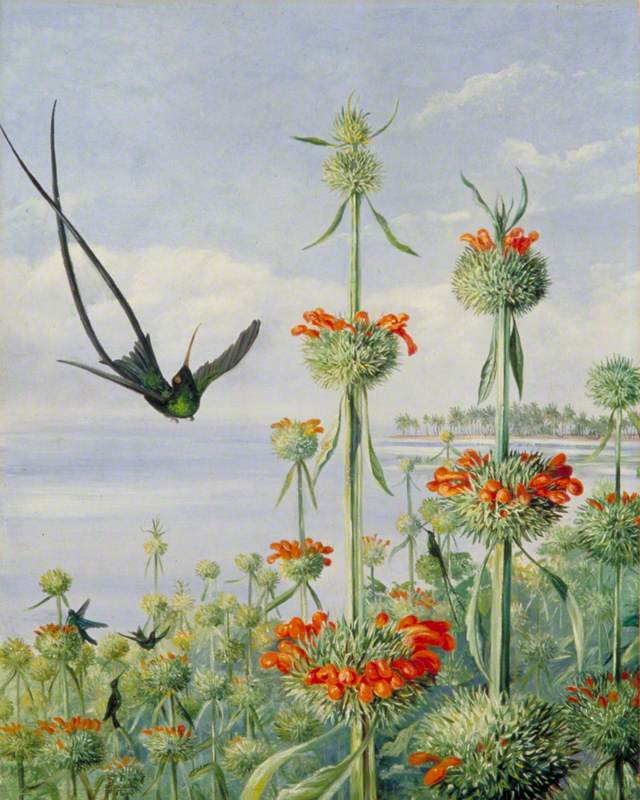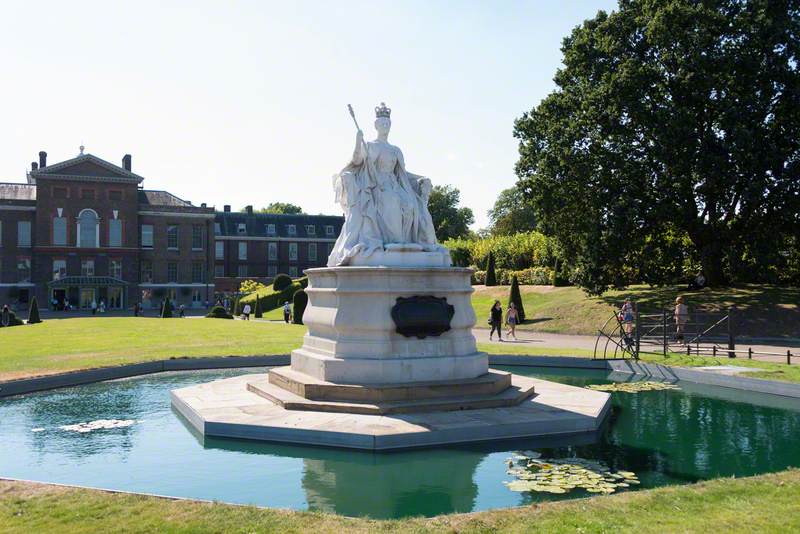New sculptural work – at the frontier of art and science – by the Scottish artist Angela Palmer is showing at Pangolin London. The exhibition 'Deep Time: Uncovering our Hidden Past' traces the extraordinary but little-known three-billion-year history of the UK in a series of sculptures using ancient materials sourced from the length and breadth of the country.
Angela Palmer with 'Tower of Time'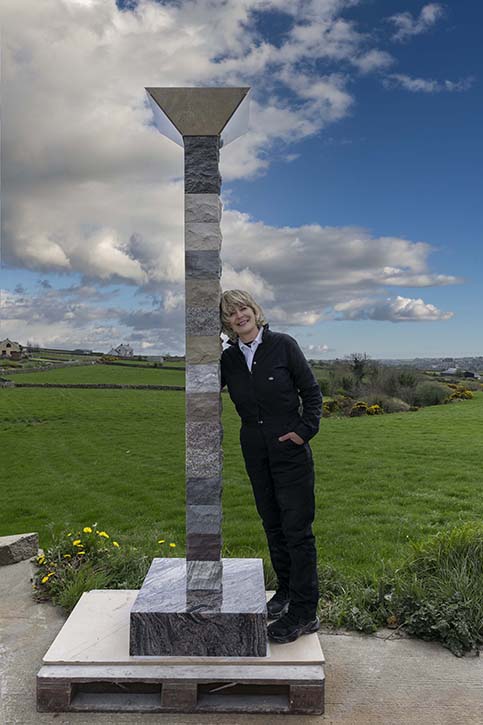
When I began this project, I had no idea that our country originated near the South Pole, and that for billions of years Scotland and Northern Ireland enjoyed an entirely separate existence on a different continent to England and Wales in the Southern Hemisphere.
It was only when the tectonic plates shifted that the continents drifted northwards and they collided. England and Scotland were physically united just south of the Equator, around 400 million to 425 million years ago. We were 'stitched' together as a united country at roughly the same location as today's Anglo-Scottish border. However, there are no mountain ranges to mark that event, as you might expect: it was a gentle collision of continents, described by geologists as a 'soft docking'.
Angela Palmer in the workshop
I hope visitors to the exhibition will unlock their imaginations and allow themselves to be propelled to the South Pole where the most ancient of these rocks in this exhibition began their journey. It was a silent world with scarcely any oxygen, with no trees, nor fish nor birds nor beasts.
The 3-billion-year history of our nation is a vast and formidable subject in time and scale, but I was determined to deconstruct its complexities, untangling how we are physically here today, in this particular place, at this particular time. And the answer slowly became obvious – to allow the rocks themselves to tell their own story. I then spent several years consulting specialists and then scouring the UK for stones to represent that vast history.
Tower of Time
2023, sculpture by Angela Palmer (b.1957) 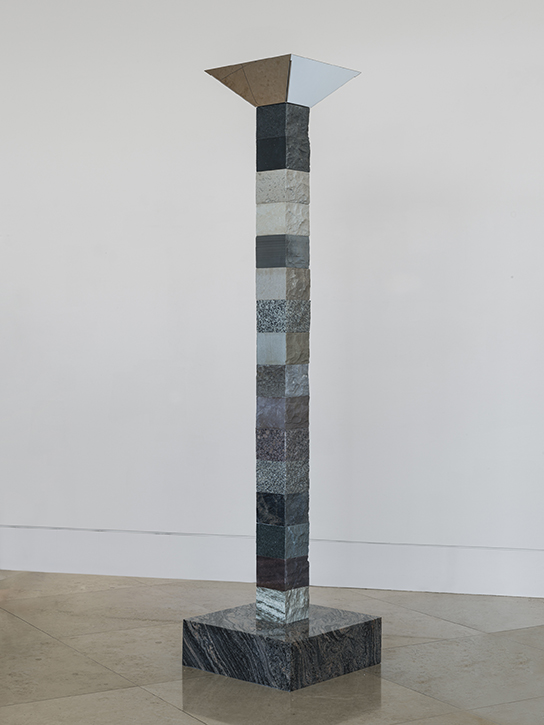
One of the centrepieces of the exhibition is the Tower of Time, a 2.6-metre-high tower tracing our nation's history through 17 rocks in historical sequence. The base is formed from 3-billion-year-old Lewisian Gneiss rock from the Isle of Barra in the Outer Hebrides. The stone is two-thirds the age of our planet, one of the oldest rocks in the world. It is likely to be the oldest thing on Earth you will ever touch with your hand.
Rising from the base is a 2.5-billion-year-old White Anorthosite rock which I acquired from a disused quarry on the Isle of Harris in the Outer Hebrides – it is the same type of rock found on the Moon and brought back on the Apollo 15 mission in 1971. The White Anorthosite rock recovered by the astronauts is known as the Genesis Rock and remains a precious specimen held under high security at NASA's Johnson's Space Centre in Houston, Texas.
Angela Palmer with 'Tower of Time'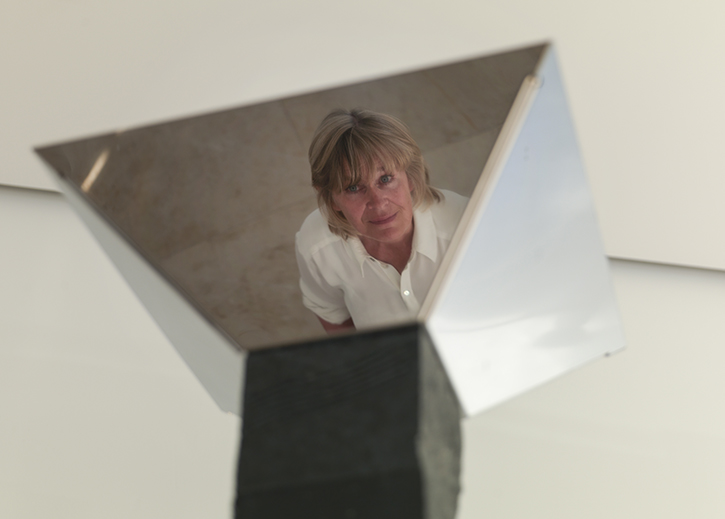
A further 15 rocks from the UK climb the tower in historical order, with a glacial boulder as the penultimate element. At the top, I wanted to represent the current geological period of the Anthropocene, marking man's impact on our planet. As modern humans, we have occupied less than 0.07% of the Earth's existence, yet in that infinitesimally short time, we have done untold damage to the planet. Mother Nature is our benign landlady, whom we take for granted at our peril. To represent the Anthropocene, I incorporated a highly polished stainless-steel element at the top of the tower, reflecting the observer as they look up.
Besides mirroring the onlooker, the steel symbolises the Industrial Revolution, which many believe was the starting point of the Anthropocene. Steel is also derived from iron, the component extracted from rocks, and of course, iron is not only found in rocks but also within our bodies, essential to our survival.
Torus of Time
2023, sculpture by Angela Palmer (b.1957) 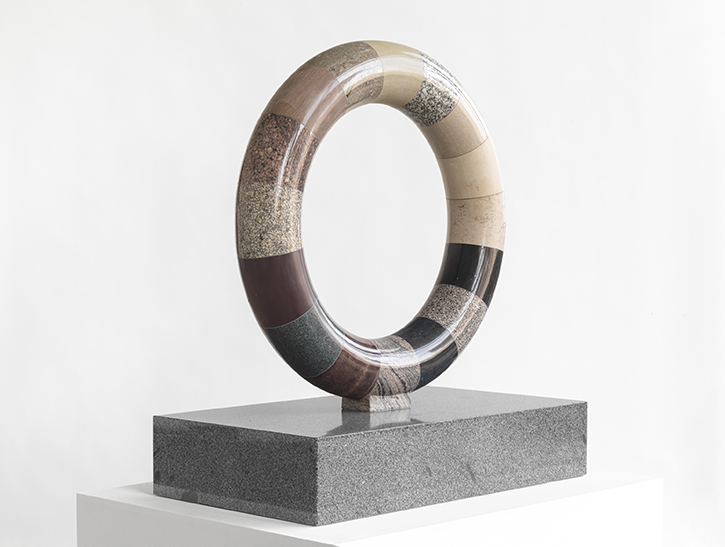
Alongside the tower is a one-metre diameter ring, the Torus of Time, similarly charting our three-billion-year history. Like the Tower of Time, it encompasses our 3-billion-year history and entire evolution. Its circular form echoes the ground-breaking discoveries of the great Enlightenment figure, Dr James Hutton, the 'Father of Modern Geology'. He was the first to describe the endless cyclical processes of the Earth, illustrated in his revolutionary paper of 1788, 'The Theory of the Earth' in which he concluded: '…we find no vestige of a beginning and no prospect of an end.'
Visitors can see, touch and interact with rocks that were here billions of years before us, and will be part of the planet long after we have gone. They represent the eternal. For some, their presence may bring a sense of reassurance about our existence and mortality.
The Four Nations
2023, sculpture by Angela Palmer (b.1957) 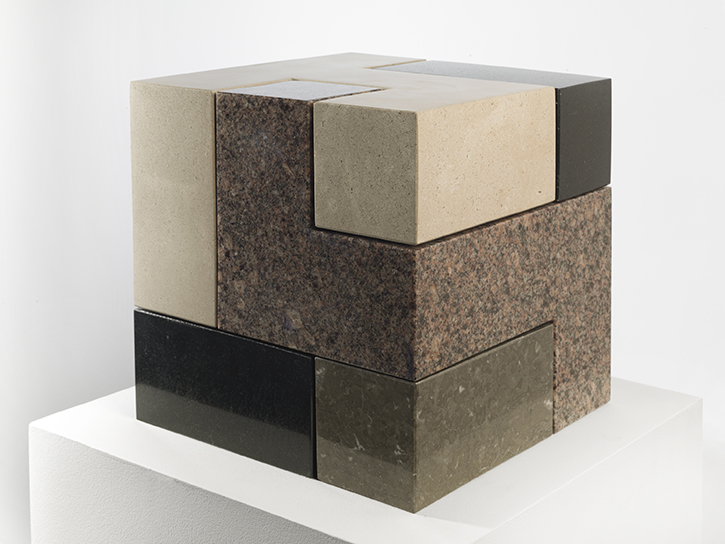
The exhibition also features a sculpture titled The Four Nations. It is a complex, interlocking block of four separate rocks to represent each of our nations – Portland stone for England; black basalt for Northern Ireland; pink Morayshire granite for Scotland; and Anglesey Limestone for Wales. As a sculpture it is not intended to signify what divides us but what makes each of our four nations different, what gives each its own character and personality. Our identity is imbued in our homes and institutions, built over generations from the rocks beneath. In a way, The Four Nations is a portrait of the UK. Each country dominates the sculptural cube depending on your standpoint. It is also very difficult to take apart and well nigh impossible to re-assemble.
Mighty Voices: From the Ends of the Earth
(detail), 2023, sculpture by Angela Palmer (b.1957) 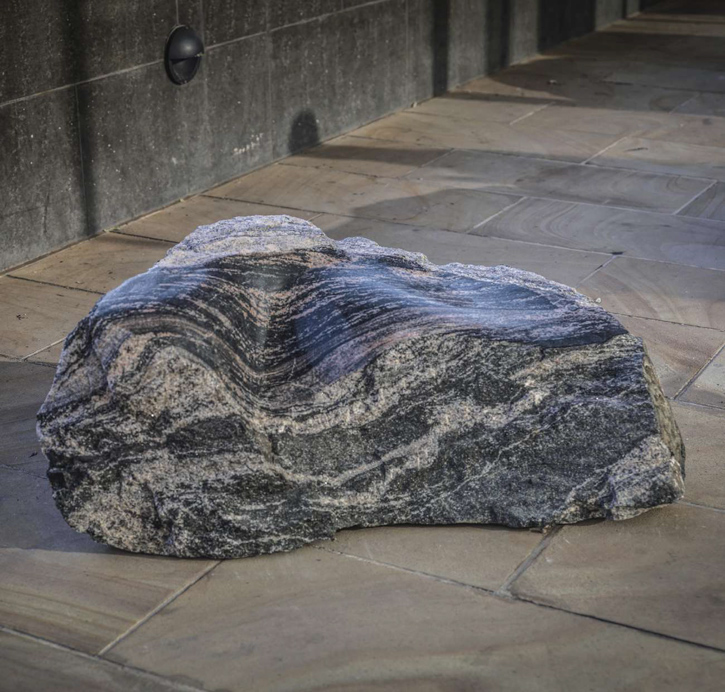
Also featuring in the exhibition is a trio of 3-billion-year-old boulders from the Isle of Barra in the Outer Hebrides, entitled Mighty Voices: From the Ends of the Earth. You will see, inscribed in their faces, the tumultuous journey they made from their original location near the South Pole – dramatic, swirling bands of energy and movement – as the tectonic plates shifted and they drifted northwards, over the Equator to their current location in the Northern Hemisphere. I want them to tell that story, and expose their raw beauty accreted over billions of years. I was much influenced by the Japanese Gutai movement, whose philosophy states: 'Keeping the life of the material alive also means bringing the spirit alive…' I tried not to impose my hand too much on these pieces, so their surface has been gently carved and polished to follow their natural contours, otherwise I have left them wild and rugged, as they were found in the landscape. To me, they stand as 'mighty voices' of our past, present and future.
Mighty Voices: From the Ends of the Earth
2023, sculpture by Angela Palmer (b.1957) 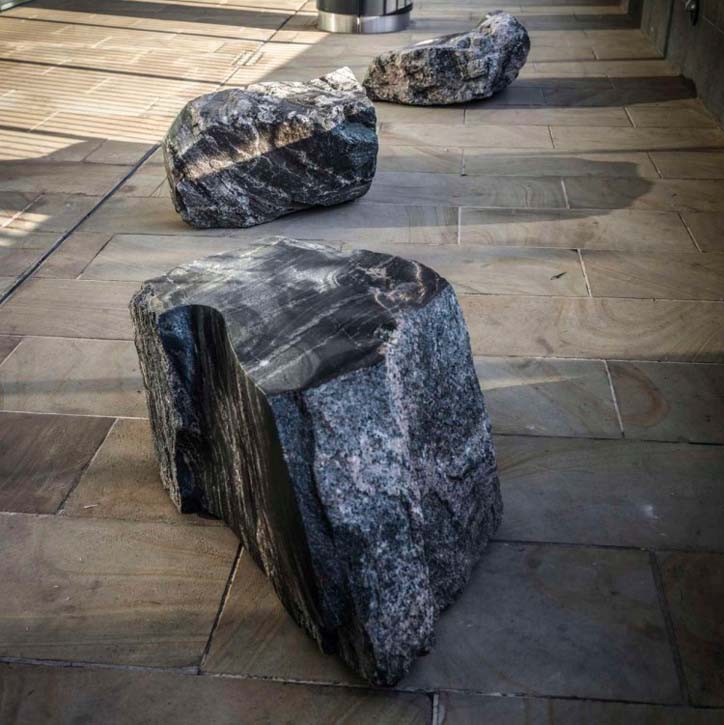
We are immersed in such a fast-moving technological age that people are losing their connection with nature. I want these rocks to help slow us down, reconnect us to the natural world and ground us. I hope that by witnessing first-hand these ancient rocks and their time span, people will get a sense of perspective and reflect on the sheer scale and power of the natural world around us.
From the Depths of Time (iv)
2023, sculpture by Angela Palmer (b.1957) 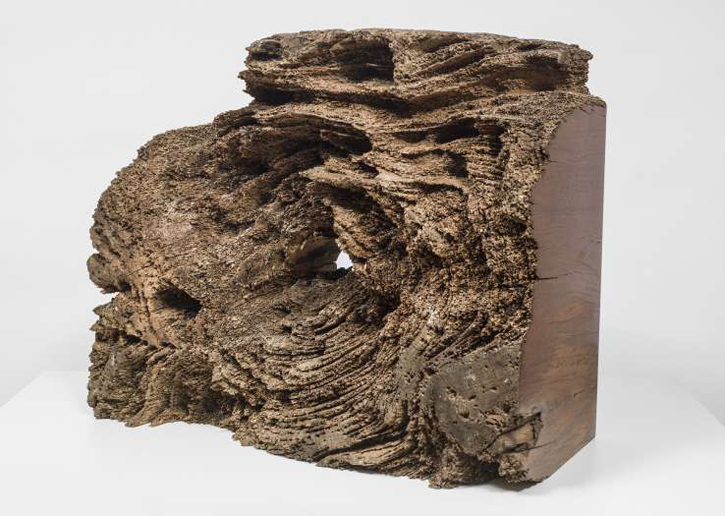
The exhibition also features a series of Burmese teak, entitled From the Depths of Time, which captures a different material similarly weathered and sculpted by nature. The teak originated in Burmese tropical forests and had been purchased by Britain during the First World War for warship construction.
The teak was en route to Liverpool in 1917 when its cargo ship, Pegu, was torpedoed by a German U-boat just off Galley Head in the Irish Sea. The material lay undisturbed on the seabed for a century before it was raised and brought to my attention. I was immediately drawn to the natural beauty of the underwater 'carvings' of the wood's soft core by marine life over the past century. Because of the incredible density of teak, the outer layer has scarcely been penetrated, and to highlight its astonishing condition, I polished the preserved wood to highlight its richly varied red hue. However, I left untouched 'nature's carvings', along with the historic seals of the British Crown and the stamps of Bombay Burmah Trading Company Limited.
From the Depths of Time (v)
2023, sculpture by Angela Palmer (b.1957) 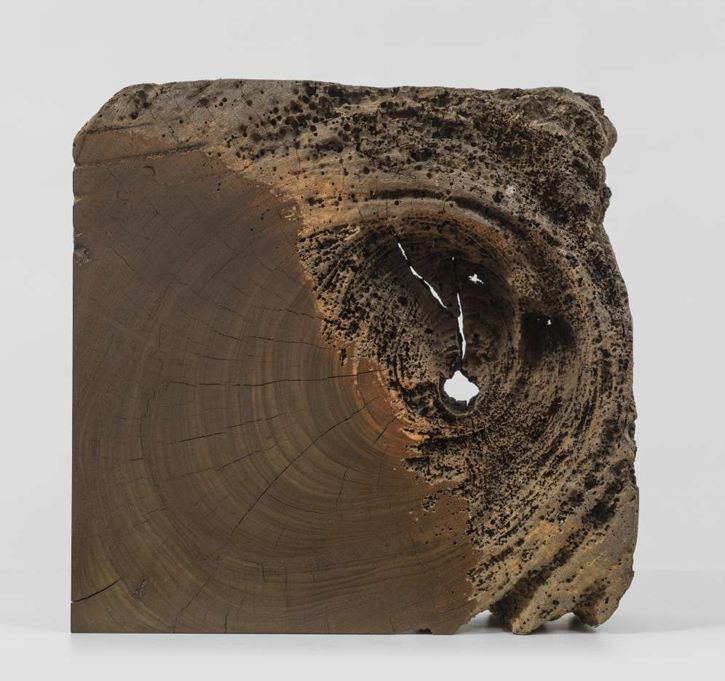
The polishing exposed the teaks' exquisite, delicate tree rings – a tableaux of spiralling lines, dancing on the surface. I immediately reached for my engraving tool. The result is a series of wall-mounted engravings, entitled The Lines of Time, in which the tree rings are brought alive, as if they are being sucked into a vortex; like the Mighty Voices, they speak of an equally tumultuous journey through history, evoking the mysteries, romance and intrigue of Deep Time.
Angela Palmer, artist
'Deep Time: Uncovering our Hidden Past' is at Pangolin London until 16th September 2023
